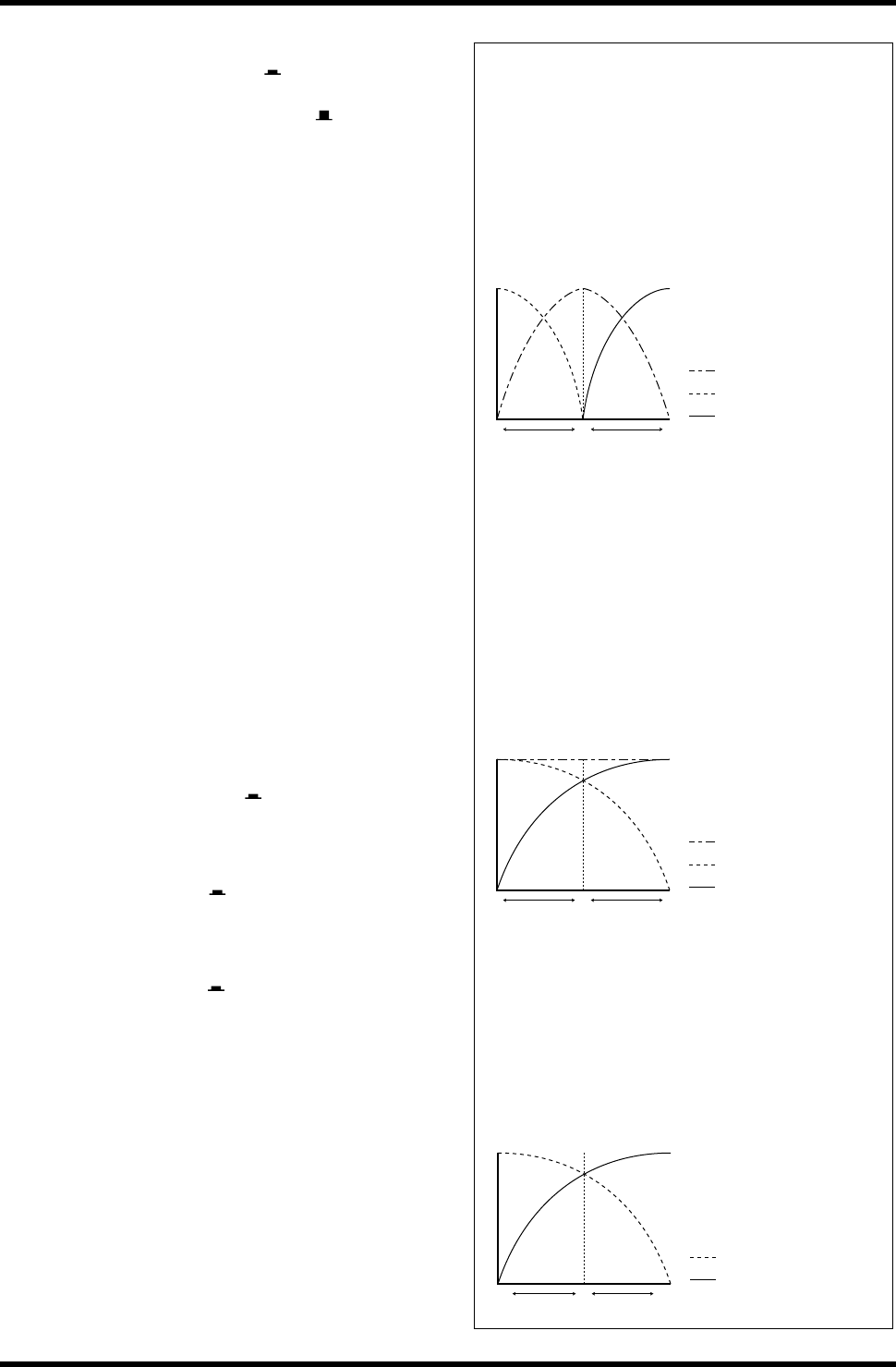
Control panel
4
M2500—Owner’s Manual
I
PRE
switches
If these switches are turned on ( ), the post-EQ pre-
fader signal will be sent to the corresponding AUX
buses. If these switches are turned off ( ), the post-
fader signal will be sent. Switches are provided to
independently switch three groups of AUX buses: 3–
6, 7–10, and 11–14.
J
PAN
control
This adjusts the pan or balance of the signal that is
sent from the monaural input channel to the STE-
REO, MONO/C, or GROUP buses. The function of
the PAN control will change as follows, depending on
the setting of the channel assign switch (
K
).
●
When the ST switch is on
PAN will adjust the pan of the signal that is sent from
the monaural input channel to the STEREO L/R bus.
●
When the LCR switch is on
PAN will adjust the pan of the signal that is sent from
the monaural input channel to the STEREO L/R bus
and MONO/C bus.
●
When a 1-2/3-4/5-6/7-8 switch is on
PAN will adjust the balance of the signal that is sent
from the monaural input channel to the odd-num-
bered (1/3/5/7) and even-numbered (2/4/6/8) chan-
nels of the corresponding GROUP bus (1-2/3-4/5-6/
7-8).
K
Channel assign switches
These switches assign the post-fader post-PAN signal
to the desired bus.
•
1-2
/
3-4
/
5-6
/
7-8
switches
When these switches are on ( ), the signal of the
monaural input channel will be sent to the corre-
sponding GROUP bus (1-2/3-4/5-6/7-8).
•
ST
(stereo) switch
When this switch is on ( ), the post-PAN signal of
the monaural input channel will be sent to the STE-
REO bus.
•
MONO
(monaural) switch
When this switch is on ( ), the signal of the monau-
ral input channel will be sent to the MONO/C bus.
•
LCR
switch
When this switch is on, the indicator above the switch
will light, and the post-PAN signal of the monaural
input channel will be sent to the STEREO bus and the
MONO/C bus.
Note:
• The LCR switch takes priority over the ST/MONO
switch. When the
LCR switch is on
, the post-PAN
signal of the monaural input channel will be sent to
the STEREO bus (L/R) and the MONO/C bus regard-
less of the on/off status of the ST/MONO switch.
When the LCR switch is on, the level of the signals
that are sent to the STEREO bus (L/R) and MONO/C
bus will change in response to movement of the PAN
control as shown in the following diagram.
• When the
LCR switch is off
, the ST/MONO switch
will function as a conventional channel assign
switch. If
ST is on
, the post-PAN signal of the
monaural input channel will be sent to the ST bus.
If the
MONO switch is on
, the signal of the mon-
aural input channel will be sent directly to the
MONO/C bus. (The signal sent to the MONO/C
bus will not be affected by the PAN control.) If the
LCR switch is off and the ST/MONO switch is on,
movements of the PAN control will affect the sig-
nal levels sent to the STEREO bus (L/R) and
MONO/C bus as shown in the following diagram.
• The 1-2/3-4/5-6/7-8 switches can always be used,
regardless of the on/off status of the LCR switch.
When the
1-2/3-4/5-6/7-8 switches are on
, the
post-PAN signal of the monaural input channel
will be sent to the corresponding GROUP bus 1–8.
When the 1-2/3-4/5-6/7-8 switches are on, move-
ments of the PAN control will affect the signal lev-
els sent to GROUP buses 1–8 as shown in the
following diagram.
LCR switch= on
Signal sent to the MONO/C bus
Signal sent to STEREO bus L
Signal sent to STEREO bus R
CRL
PAN control
< Response curve 1 >
Signal level
CRL
LCR switch= off
ST switch= on
MONO switch= on
< Response curve 2 >
Signal sent to the MONO/C bus
Signal sent to STEREO bus L
Signal sent to STEREO bus R
PAN control
Signal level
C EVENODD
1-2/3-4/5-6/7-8 switches= on
Signal sent to GROUP buses 1/3/5/7
Signal sent to GROUP buses 2/4/6/8
< Response curve 3 >
PAN control
Signal level


















